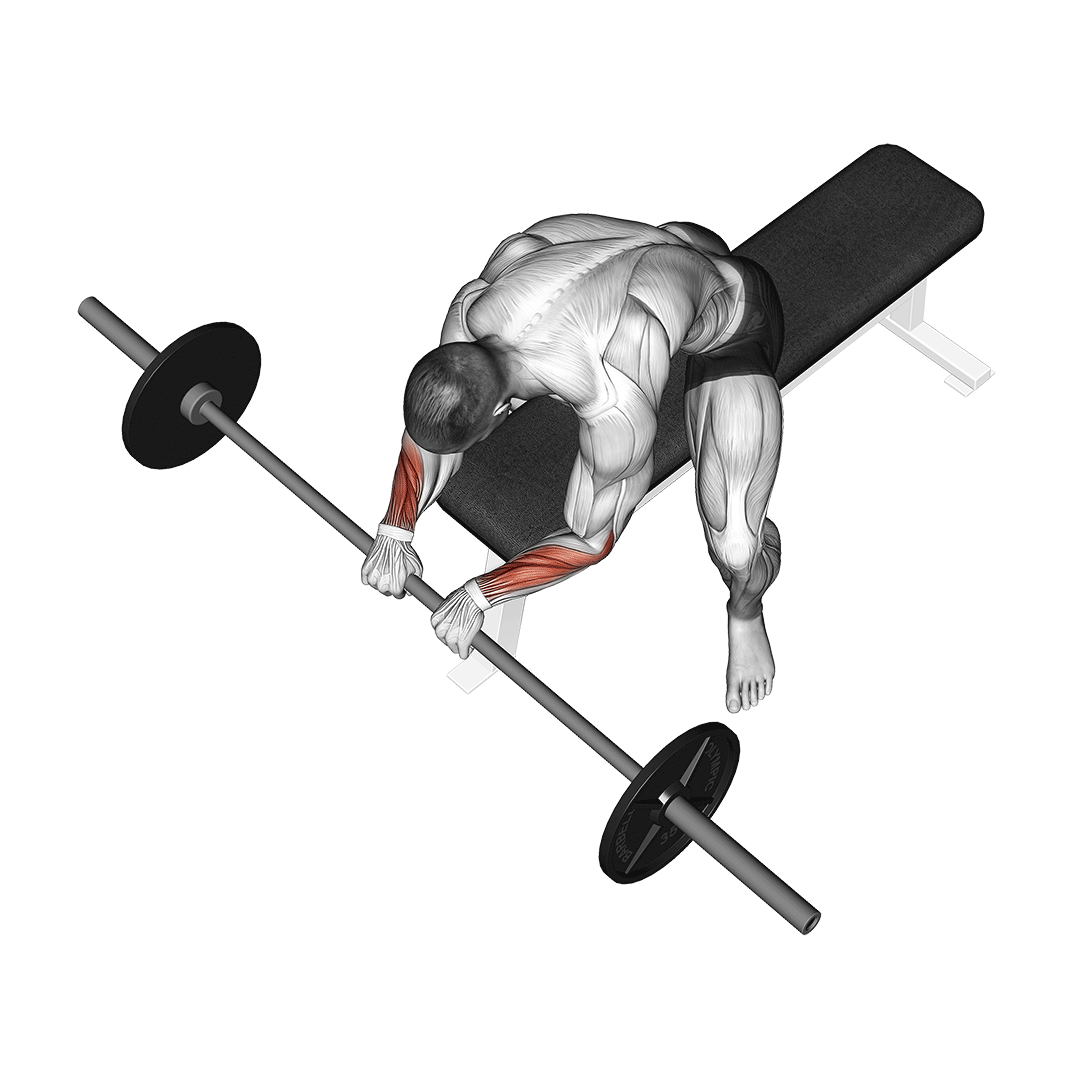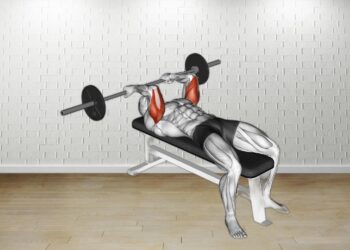The Barbell Reverse Wrist Curl is a highly effective exercise for developing forearm strength and enhancing grip power. By targeting the extensor muscles along the back of your forearms, this movement contributes to balanced arm development and supports overall upper body strength. Incorporating this exercise into your routine can improve performance in daily activities and other lifts that require a strong grip.
Include the Barbell Reverse Wrist Curl in your workout two to three times a week, allowing at least 48 hours between sessions for muscle recovery. Focus on proper form by avoiding momentum and starting with a manageable weight to prevent injury. Beginners or those with wrist concerns should use a lighter barbell or even body weight until comfortable progressing. Maintain controlled motions and pause at the top of each lift to maximize muscle contraction. Consistency with this exercise will lead to significant improvements in forearm strength and grip, enhancing your fitness journey.
How to Do a Barbell Reverse Wrist Curl

To perform the Barbell Reverse Wrist Curl:
- Stand upright with feet shoulder-width apart, holding a barbell with an overhand grip (palms facing down) resting against your thighs.
- Keep your elbows close to your body and lift the barbell by extending your wrists upward.
- Raise the barbell until your wrists are fully flexed, maintaining tension in your forearms.
- Pause briefly at the top to enhance muscle contraction.
- Slowly lower the barbell back to the starting position, fully extending your wrists.
Inhale as you prepare and exhale as you lift the barbell to maintain proper breathing throughout the exercise.
Level Up Your Fitness: Join our 💪 strong community in Fitness Volt Newsletter. Get daily inspiration, expert-backed workouts, nutrition tips, the latest in strength sports, and the support you need to reach your goals. Subscribe for free!
Common Mistakes to Avoid
- Using Excessive Weight: Many individuals load too much weight onto the barbell, which can compromise their form. To avoid this, start with a manageable weight that allows for controlled movements and a full range of motion.
- Flaring Elbows: Allowing elbows to drift away from the body reduces the effectiveness of the exercise. Keep elbows tucked close throughout the movement to maintain tension on the forearms.
- Incomplete Range of Motion: Not fully extending the wrists or not lifting the barbell high enough diminishes the exercise’s benefits. Ensure you lift until your forearms are vertical and fully extend your wrists at the bottom for optimal muscle engagement.
- Neglecting Breathing: Holding your breath during the movement can hinder performance and increase tension. Follow the breathing pattern of inhaling while lifting and exhaling while lowering the barbell.
- Performing Fast Reps: Quick, jerky movements can lead to injury and less effective workouts. Focus on slow, controlled repetitions to maximize muscle contraction and minimize the risk of strain.
Benefits
- Enhanced Forearm Strength: This exercise specifically targets the extensor muscles of the forearm, helping to increase overall grip strength.
- Improved Wrist Stability: Regularly practicing reverse wrist curls contributes to better wrist stability, which is essential for various daily activities and sports.
- Injury Prevention: Strengthening the forearms can reduce the risk of repetitive strain injuries, especially for those involved in activities that require a strong grip.
- Balanced Muscle Development: Incorporating this exercise into your routine promotes balanced muscle development between the forearm flexors and extensors.
- Better Performance in Other Lifts: Increased forearm strength can lead to enhanced performance in other weightlifting exercises, such as deadlifts and pull-ups, due to improved grip strength.
Exercise Variations
Alternative Exercises
Safety Precautions
Prioritize safety by using a weight you can control comfortably. Overloading can lead to improper form and increase injury risk. Start with lighter weights to master the technique before progressing.
Ensure wrists remain in a neutral position to prevent discomfort or injury. If you experience pain, stop immediately and reassess your form or consult a professional.
Always warm up properly with dynamic stretching and light wrist exercises to prepare your muscles and joints. Listen to your body and adjust as needed to maintain a safe and effective workout.
Interested in measuring your progress? Check out our strength standards for Wrist Curl, Pull Ups, Deadlift, and more.








